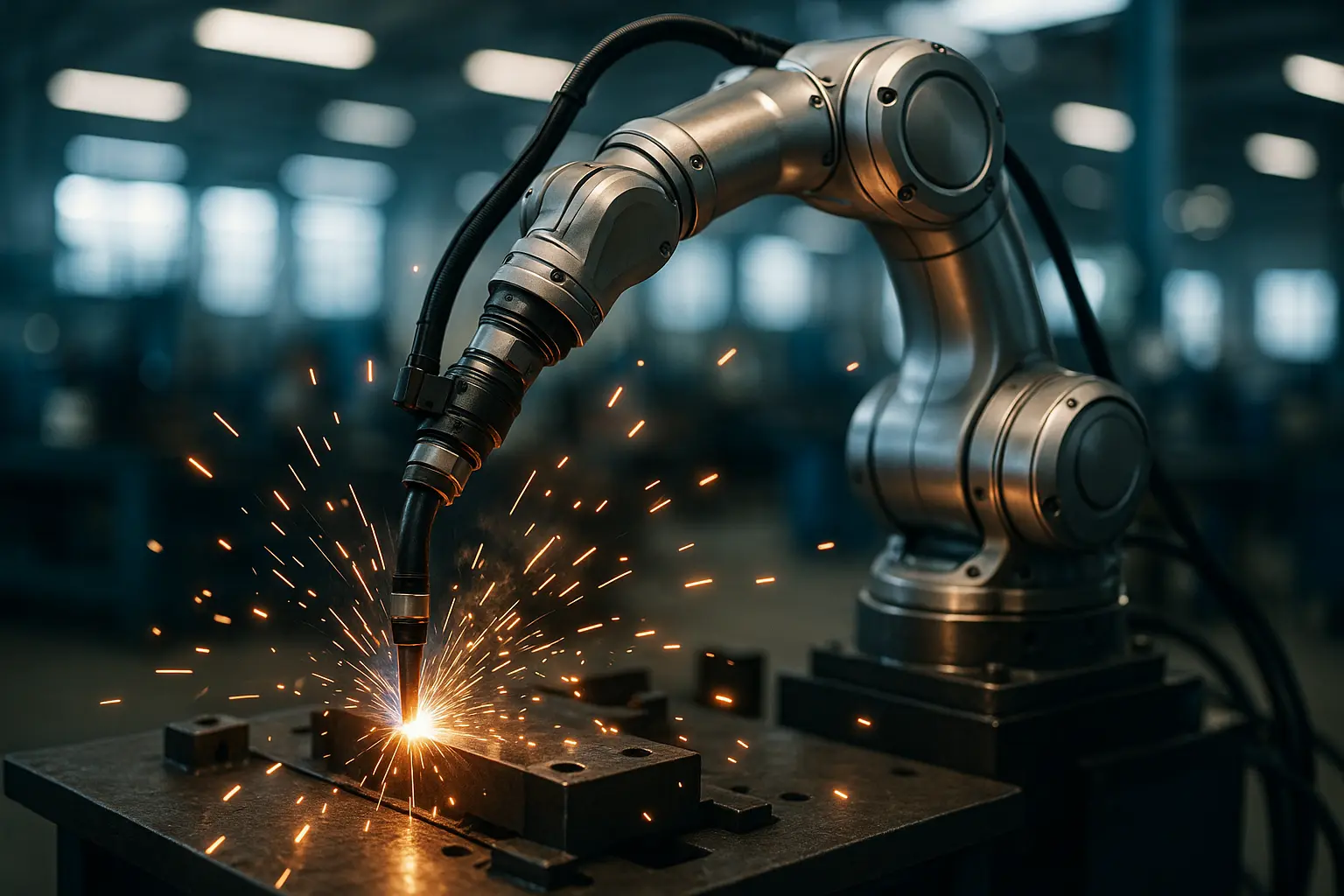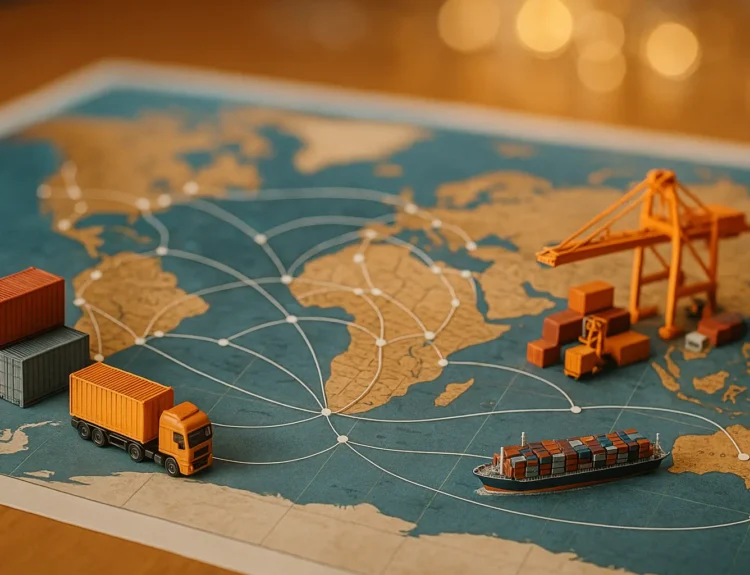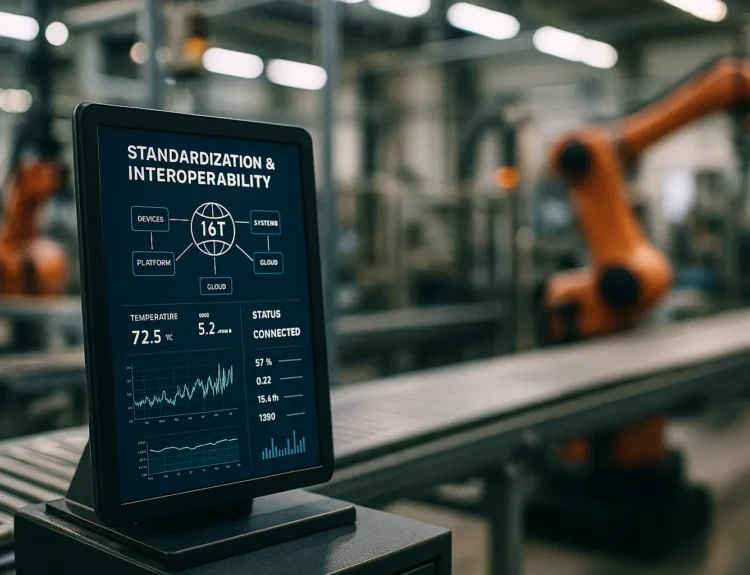In an era where technological advancement shapes the contours of modern industry, there’s a remarkable transformation unfolding in the realm of manufacturing: robotic welding. This high-tech marvel represents not just a leap forward in automation, but a redefinition of quality and efficiency. As we navigate this exciting landscape, we find ourselves at the intersection of human ingenuity and robotic precision, where innovative welding systems are setting a new standard for productivity. With robotic welding systems, we are witnessing an industry reshaped by innovation, where the relentless pursuit of perfection meets machine precision.
Understanding Robotic Welding
At its core, robotic welding is the art of integrating robots into welding processes to perform tasks with unmatched precision. The robotic arm, often equipped with a welding torch, mimics human movements but operates with a level of accuracy and consistency that is simply unattainable by human hands.
Robotic Arc Welding: Among the many processes, arc welding stands out for its versatility and strength. Robotic arc welding employs an electric arc to melt metals at the joint, creating a robust bond. This process ensures high-quality welds and is particularly effective in handling repetitive tasks.
Laser Welding Systems: Another star player in the robotic welding arena is laser welding. Known for its speed and precision, laser welding utilizes a focused laser beam to fuse materials. This system’s ability to deliver clean, precise welds makes it invaluable in industries where precision is paramount.
MIG Welding with Robots: Metal Inert Gas (MIG) welding is a staple in many production lines. With robotic integration, MIG welding becomes faster and more consistent. The robot’s ability to control the wire feed ensures an even, smooth weld, reducing the risk of human error.
In every application, robotic welding offers a suite of advantages, from increased production speed to enhanced safety and quality. By automating the welding process, we minimize human exposure to hazardous environments and elevate the overall efficacy of the manufacturing line.
Programming and Operation of Robotic Welding Systems
The transition to robotic welding systems requires a deep dive into programming and operation. Each machine must be meticulously programmed to execute tasks with precision. This process involves setting parameters such as speed, angle, and distance, ensuring the robot performs accurately every time.
Programming: We utilize sophisticated software to program the robots. This software allows operators to input precise instructions, tailoring the robot’s movements to the specific welding process. This level of customization is crucial for achieving the desired quality and consistency.
System Calibration: System calibration is a pivotal step in ensuring the robot delivers optimal performance. Regular checks and adjustments guarantee that the robot’s sensors and actuators are synchronized, maintaining the integrity of each weld.
Robotic Welding Torch: The torch is the robot’s primary tool, and its precision is vital for successful welding. Regular maintenance of the torch, including cleaning and replacement of worn-out components, is essential to maintain high quality welds.
Through diligent programming and operation, we harness the full potential of robotic systems, ensuring they function seamlessly within the production environment. This not only boosts efficiency but also maintains the consistent high quality our industry demands.
The Role of Robotic Welding in Modern Industry
As we delve further into the 21st century, the role of robotic welding in modern industry continues to expand. The integration of robots into the welding process is not merely a trend; it’s a revolution that reshapes how we approach manufacturing.
Efficiency and Speed: Robotic welding systems operate at speeds unmatched by human welders. This acceleration means that production lines can run faster, meeting tight deadlines and reducing lead times. The result is a more agile manufacturing process, capable of adapting to changing market demands.
Consistency and Quality: One of the standout features of robotic welding is its ability to deliver consistent quality. Unlike human welders, robots do not tire, and their performance does not degrade over time. This consistent output is crucial in industries where precision is non-negotiable.
Safety and Ergonomics: By automating welding processes, we significantly reduce the risk of workplace injuries. Robots take on the tasks that pose the greatest risk to human operators, allowing us to prioritize safety without compromising on productivity.
Adaptability and Innovation: The beauty of robotic welding systems lies in their adaptability. As new technologies emerge, these systems can be updated and reprogrammed to incorporate new techniques, ensuring they remain at the forefront of technological advancement.
In essence, robotic welding is a cornerstone of the modern industrial landscape, driving advancements and setting the stage for future innovations.
As we reflect on the transformative power of robotic welding, it’s clear that we stand at the precipice of a new industrial era. The seamless fusion of robots and welding technologies is not just a glimpse into the future; it’s a present reality that reshapes how we understand production and quality.
Through strategic programming and system optimization, we unlock the potential of robotic systems, ensuring that each weld is a testament to precision and quality. As industries evolve, so too does our approach to manufacturing, where the synergy between human ingenuity and robotic precision crafts the future, one weld at a time. In this fast-paced world, embracing robotic welding is not merely an option, but a necessity, redefining the way we work, innovate, and excel.
FAQ
What is robotic welding and how does it differ from manual welding?
Robotic welding refers to the use of programmable robots to automate the welding process. Unlike manual welding, where a human operator performs the task, robotic welding ensures consistent precision by executing pre-programmed instructions, enhancing efficiency and reducing human-related errors.
What types of welding processes can be automated with robots?
Robotic welding systems can handle a variety of welding processes, including MIG (Metal Inert Gas), TIG (Tungsten Inert Gas), and spot welding. Each process can be automated to suit specific materials and project requirements, ensuring versatility in industrial applications.
How does robotic welding improve safety in the workplace?
Robotic welding minimizes direct human involvement in potentially hazardous tasks, reducing the risk of injuries from heat, fumes, and exposure to harmful radiation. Robots can operate in environments that might be dangerous for humans, ensuring a safer workplace.
What are the initial considerations for implementing robotic welding in a facility?
Before introducing robotic welding systems, facilities must consider factors such as the complexity of the welds required, the volume of production, available budget, and the existing infrastructure. Proper training for staff and the selection of compatible equipment are also crucial for successful implementation.
What are some potential challenges faced when integrating robotic welding into production lines?
While robotic welding offers numerous benefits, challenges may include the initial setup cost, programming complexity, and the need for regular maintenance. Additionally, adapting existing processes to suit robotic systems may require significant time and resources.



